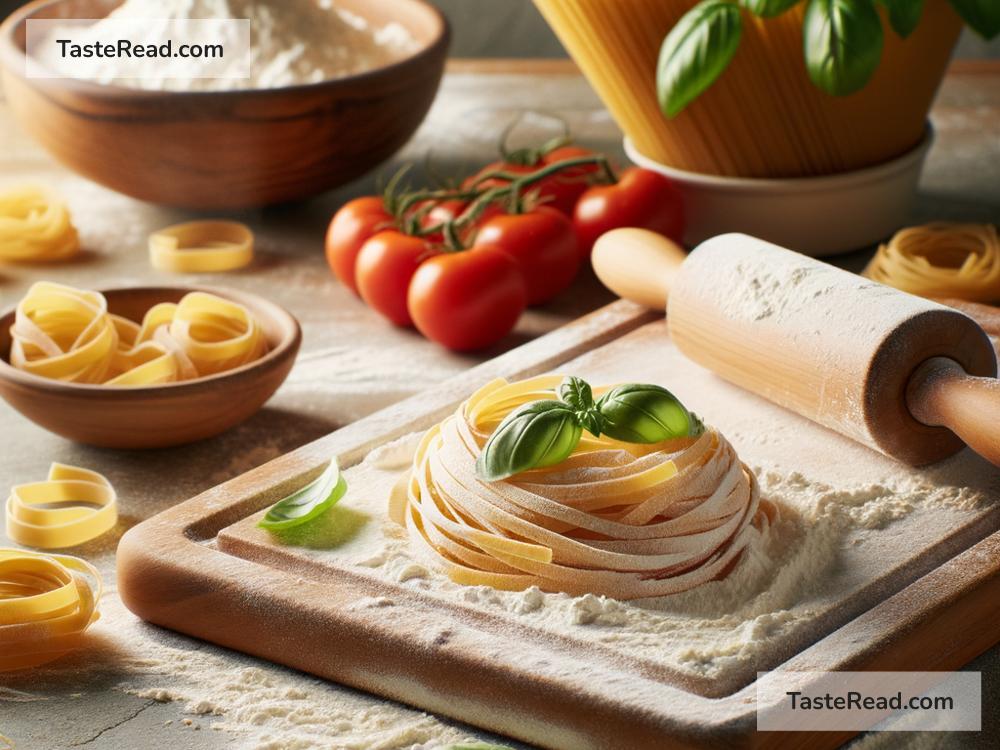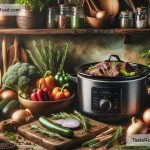How I Mastered the Craft of Homemade Pasta from Scratch
For years, I viewed the craft of making pasta from scratch as a culinary summit, reserved only for the most skilled chefs or Italian grandmothers who had secrets passed down through generations. It wasn’t until a particularly adventurous weekend that I decided to take on the challenge myself. The journey from that fateful decision to becoming quite proficient at crafting homemade pasta is one filled with flour-covered counters, a healthy dose of patience, and an insatiable pursuit of perfection. Let me share with you how I mastered the craft of homemade pasta from scratch.
Starting Simple: The Basic Ingredients
For something that tastes so incredible and offers endless variety, the basic ingredients for pasta couldn’t be simpler. All I needed was flour and eggs. That’s it. I learned that while the ingredient list is short, the type of flour can significantly affect the outcome. I started with all-purpose flour for its accessibility, but soon discovered the wonders of semolina and “00” flour, which are often heralded by pasta aficionados for their superior texture and ability to bind with sauces.
The Magic Ratio
The magical ratio that propelled me into pasta-making success was about 100 grams of flour to 1 large egg. This ratio, I found, was a good starting point, but needed slight adjustments based on the flour type and humidity. The fun part here was getting my hands dirty, quite literally, mixing the flour and eggs together until they formed a cohesive ball. My kitchen turned into a science lab, understanding how slight changes in measurements impacted the dough’s consistency.
Kneading: The Test of Patience
Kneading the dough was perhaps the most challenging skill to master. Early attempts resulted in dough that was either too sticky or too stiff. I soon learned that the key was in the feel of the dough, which should eventually be smooth and elastic. This kneading process, taking anywhere from 10 to 15 minutes, was not just about transforming the dough’s texture but was also an exercise in patience and understanding the importance of gluten development in achieving the perfect pasta.
Resting: A Crucial Step
One of the most valuable lessons I learned in my pasta-making journey was the importance of letting the dough rest. Initially, I was too eager to roll and cut, skipping this crucial step. Resting the dough for at least 30 minutes allows the gluten to relax, making the rolling process much easier and the pasta texture more desirable. This downtime provided a perfect intermission for cleaning my work area (or taking a well-deserved break), before moving on to the next exciting step.
Rolling and Cutting: Where Art Meets Science
Without a pasta machine, I initially relied on a rolling pin and my determination to achieve those dreamy, thin sheets of pasta. It was labor-intensive, yes, but incredibly satisfying. I learned that the dough should be rolled as thinly as possible for most pasta types, a task that requires a gentle touch and lots of practice. When I finally invested in a pasta machine, the process became more streamlined, but I cherish the skills and appreciation I developed during those manual rolling sessions.
The Moment of Truth: Cooking Fresh Pasta
Cooking fresh pasta is a quick affair, markedly shorter than cooking dried pasta. Fresh pasta cooks in boiling salted water in just 1-3 minutes. My first successful batch of spaghetti had me hooked. The difference in taste and texture compared to store-bought pasta was unmistakable – a light, delicate bite with a surface that clung to the sauce brilliantly.
Practice Makes Perfect
Mastering the craft of homemade pasta didn’t happen overnight. It took numerous attempts, learning from mistakes, and refining techniques through practice. Every batch taught me something new, whether it was understanding the impact of dough hydration or perfecting the cut of different pasta shapes.
Embracing Creativity
Once I got the basics down, the real fun began. Pasta making became a canvas for creativity. I experimented with adding flavors to the dough – herbs, spinach, and even squid ink, transforming simple pasta dishes into gourmet experiences. The possibilities were endless, and each successful experiment fueled my passion further.
Sharing the Love
The joy of homemade pasta isn’t just in the making or eating; it’s in sharing. Inviting friends and family over for a pasta-making session turned into one of my favorite ways to spend an evening. Teaching others what I had learned, watching them experience the wonders of transforming simple ingredients into something beautiful and delicious, was incredibly rewarding.
The Journey Continues
Mastering homemade pasta from scratch has been a remarkable journey. It’s a skill that continues to evolve, as I delve deeper into the art and science of pasta making. What began as a daunting challenge has transformed into a beloved hobby, where each batch of pasta is a reminder of the journey’s fruitfulness and the endless explorations that lie ahead.


